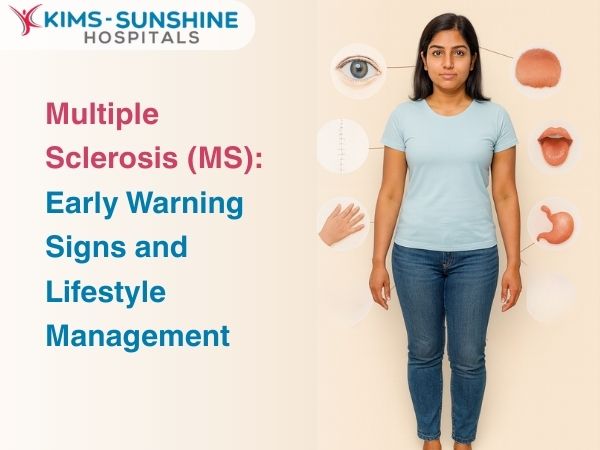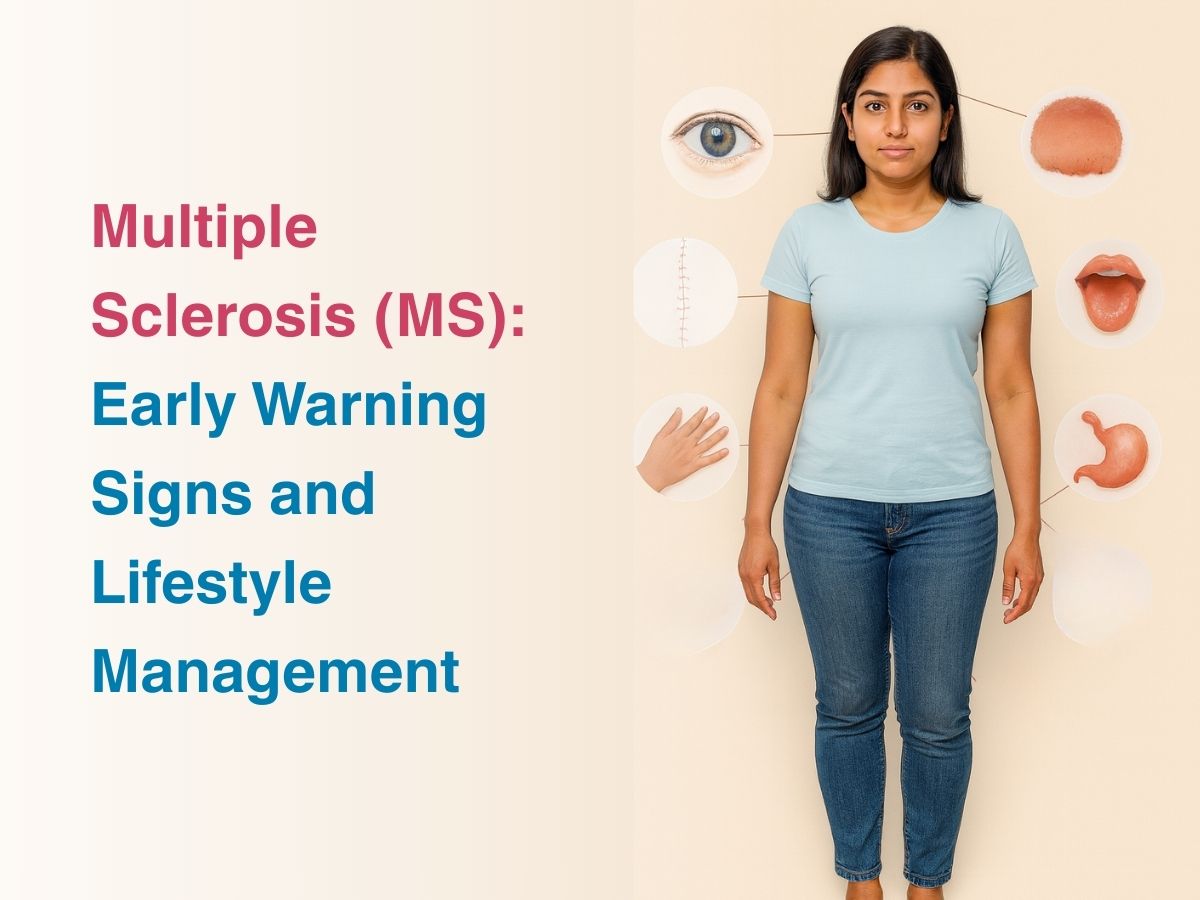
Multiple Sclerosis (MS): Early Warning Signs and Lifestyle Management

Multiple Sclerosis (MS) is a neurodegenerative condition- which means it is chronic and cannot be cured. The symptoms only get worse with each passing year and treatment involves the use of certain drugs or formulations that help treat only the symptoms you may suffer from. MS affects quite a lot of people in the country, though doctors believe that there is rampant under-diagnosis or misdiagnosis preventing affected individuals from getting the care they actually need. This can be due to poor awareness associated with the condition or that the initial symptoms mimic so many other conditions, that proper diagnosis can be difficult, unless there is a specialist involved.
What is Multiple Sclerosis?
Multiple sclerosis, described in medical literature as “a chronic immune-mediated disorder of the central nervous system that disrupts communication between the brain and body”, gradually unfolds when the immune system begins to attack the protective myelin sheath around nerve fibres, creating unpredictable symptoms that may vary widely in intensity and pattern, leaving individuals in India and across the world navigating a condition that is both complex and deeply personal, often requiring long-term commitment to neurological care, lifestyle adjustments, and emotional resilience.
Early Symptoms Of MS
Early MS symptoms, which often meander into a person’s life subtly and without dramatic warning, may include numbness that feels like an unexpected veil settling over the limbs, blurred vision that appears as though a soft mist has entered the visual field, sudden fatigue that feels heavier than ordinary tiredness, or tingling sensations that quietly travel along the spine or face. It has been noted in a European neurological study that “early recognition improves long-term functional outcomes”, so paying attention to these signals becomes essential for timely medical evaluation.
Causes And Risk Factors For MS
The causes of MS, which contemporary research still continues to unravel, appear to arise from a complicated interplay of autoimmune tendencies, genetic susceptibility, and environmental factors and although India sees comparatively lower MS prevalence, shifting lifestyles, rapid urbanisation and improving diagnostic systems reveal how risk factors can intersect subtly, creating a landscape where early awareness becomes a powerful form of preventive wisdom.
Diagnosis Of Multiple Sclerosis
Diagnosing MS requires a careful layering of clinical assessment, neurological examination, MRI imaging that reveals characteristic lesions scattered across the brain and spinal cord and occasionally a lumbar puncture that examines cerebrospinal fluid for inflammatory markers. MRI remains the most sensitive tool for detecting MS-related demyelination, ensuring that individuals receive a clear and accurate diagnosis that guides treatment decisions with clarity and confidence.
Relapsing-Remitting Vs Progressive MS
Relapsing-remitting MS, which is the most common form, shows a rhythm of flare-ups followed by periods of calmer stability, while progressive MS unfolds with a more steady accumulation of disability over time. Understanding these patterns helps patients and their families prepare for the future with realistic expectations and proactive planning, as predicting how the disease may progress is never easy or even possible in most or all cases.
Conclusion
Coping with MS, much like navigating any chronic neurological condition, becomes a layered journey that blends emotional acceptance, informed decision-making, social support, mental health care and the ability to adapt to new challenges. Many patients find solace in grounding practices, community groups, counselling, routine-building, or even small daily rituals of self-kindness, reminding themselves gently, that “resilience grows quietly in the spaces where hope meets discipline”.






